Are you considering buying a gift? Let us help…
Are you considering buying a gift? Let us help…
Musto Wine Grape Company, LLC. has gifts for those starting out in winemaking, those who are experienced winemakers, or those who simply love wine or have a special winemaker in their lives.
So, what sort of person are you buying for?
Is this person interested in making wine for the first time or relatively new to winemaking?
Those interested in making wine may want to start out with some of the following:
Winemaking Equipment kits come with many of the basic and reusable items that are essential for making a basic batch of wine. Kits can be purchased pre-packaged or you can work with a Musto sales rep to enhance the kit items.
Winemaking Ingredient Kits exist for every budget and contain the ingredients needed to ferment and finish wine for bottling and enjoyment. There are kits available for all tastes.
While there are many different pieces of equipment that can be purchased for winemaking, few are as essential to crafting consistently good wine as are these items…
Hydrometer
Acid Tiration Kits (we recommend our own Pro Acid Kit!)
pH meters
Professional Books on Winemaking
A Professional Winemaker Led Class At Musto Wine Grape Company, LLC at our Hartford, CT location.
Perhaps the person you are buying for falls into the “Experienced Winemaker” category?
If your winemaker is an “Experienced Winemaker” he or she may already have those items mentioned for the those who might just be getting started in winemaking. For those who do, you may want to consider some of the following items, big and small.
New Wine Barrels
Stainless Steel Variable Capacity Tanks
Chemical Analysis Meters
Wine Bottles
OR…Maybe the person you are buying for simply loves wine and/or a special winemaker?
Gift Certificates…The Perfect Gift!
There may be no better gift option than the gift certificate. It allows the recipient to apply the value of the certificate to any item that they wish to purchase and at a time they are ready to do so. Our gift certificates come with a gift certificate holder and may be used for either online or in-store purchases. Click here to purchase a gift certificate in a convenient denomination.
Also, we are constantly running New and Special Deals on All of Our Products –> Check out our Shopping Page for more Information and Coupons!
Washington Merlot Harvest
Extra, extra, read all about it – we will have Washington Wine Grapes This Year!
Specifically Own-Rooted Merlot from the Rattlesnakes Hills in Yakima Valley.
About the Soil:
The surface layers of vineyard soils are based primarily in loess, which is mostly wind-deposited silt and fine sand derived from the sediments of the ‘Missoula’ ice age floods. The content of the soils consists of a mixture of minerals derived from both the local basalt bedrock and the granite and limestone of northern Idaho and Montana.
Most of the soils are classified as silt loams (mostly Harwood-Burke, but also Weihl and Scoon), which are low in clay. The low clay content creates well-drained soils, encouraging the vines to root more deeply, a factor generally associated with high quality grapes and wines. It also creates an inhospitable environment for phylloxera, an aphid-like pest that feeds on the roots of grapevines. Due in large part to the clay-poor soils, the Yakima Valley is one of the few places on earth where European wine grapes (such as Cabernet Sauvignon, Merlot, and Pinot Noir) can still be grown on their own roots, also a factor generally associated with high quality.
The shallow soil profile contains large chunks of calcium-caked gravel and calcium carbonate horizons called “Caliche”. In most areas, the caliche forms a conspicuous white layer under the topsoil that adds mineral complexity. The deep roots of the vines penetrate through the surface layer of loess, which averages 18 inches in thickness throughout most of the vineyard, and into the underlying calcium-rich substrate. This gravelly, high pH substrate forces the vines to struggle, an additional factor associated with high quality grapes and wine.
About Being Own-Rooted:
An Own-Rooted vine is a vine that has no rootstock. This is not common in most wine regions around the world. The rootstock & vine grafting was necessary at one point to protect from specific diseases such as Phylloxera. The Washington soil type is made up of a fine silt loam which Phylloxera hates – this is why they can plant Own-Rooted vines.
It is said that there are differences in the wines from Own-Rooted vs. Rootstock Grafted Vines. There is much debate around this issue. It looks like you will have to be the judge!
About the Merlot:
The Merlot Clone coming from this vineyard has clusters that are small to medium in size. The berries are small and round. This clone produces a high vigor vine that creates a dense canopy. Yield is usually around 3-5 ton acre depending on the growing season.
The clone produces a soft, full-bodied, fruity wine full of many different complexities. A great Merlot that can stand alone and age – or be added to a blend to give the wine that extra punch of structure.
Harvest Update: 8/25/2016
ARRIVING to Hartford, CT Early Next Week:
8/29/2016:
LODI
- Costamagna Chardonnay
- Lodi Gold Grenache
- Valley Beauty Barbera
- Smiling Baby Merlot
- Valley Beauty Zinfandel
9/1/2016:
LANZA – Suisun Valley
- Sauvignon Blanc
CENTRAL VALLEY
- Cry Baby Muscat (42lb)
- Muscat King (42lb)
- Cry Baby Thompson Seedless (42lb)
- Lugano Old Vine Zinfandel
- Lucerne Old Vine Zinfandel
JUICES from LODI
- A Mix of Varieties
Call 877.812.1137 or email sales@juicegrape.com for more information
Paso Robles
Paso Robles is one of California’s emerging AVAs. It has grown from a sleepy town to a high end wine growing and wine producing region. Winemaking on the Central Coast began when the Franciscan Friars traveled through California establishing Missions. The Missionaries started planting grapes in 1790. You can still see these vines growing today. Since the original plantings of the Missionaries, Paso Robles has become a top destination for farmers to plant grapes. Many famous people have planted vineyards and started wineries in this region. For example, Ignace Paderewski, the Polish pianist purchased 2,000 acres in the 1920’s. He planted Petite Sirah and Zinfandel and eventually opened York Mountain Winery; which is still in existence today.
Paso Robles is comprised of 26,000 acres of wine grapes. It is one of the fastest growing wine regions in California and on the Central Coast. It has a diverse topography. There are rivers, roiling hills, flat lands, and mountains. The soil is comprised of bedrock, weather granite, marine sedimentary rocks, and volcanic rocks. Because of the many different soil components one vineyard block could contain several different soil types.
In terms of grapes, Paso Robles is known for growing Zinfandel, but has gained recognition for Bordeaux and Rhone varieties. The AVA likes to produce non-traditional blends. It is a valley that doesn’t follow the rules and expectations of tradition winemaking. The winemakers of Paso Robles like to make their own rules.
M&M will be receiving Cabernet Sauvignon, Merlot, Old Vine Zinfandel, Petite Sirah, Syrah, Cabernet Franc, Sangiovese, Grenache, and Pinot Noir. Pre-Orders are now being accepted. Please call or email us at sales@juicegrape.com or 1-877-812-1137.
M&M’s Top 3 Paso Robles Wineries: Justin Winery, Opolo Vineyards, and Kukkula
Winemaking Classes Are BACK!!
Hey Guys!
As Wine Grape Season approaches we are starting to brush up on our winemaking skills. Below is our NEW Schedule of Winemaking Classes. Please contact Christina Musto via phone (877.812.1137) or email (cmusto@juicegrape.com) or sign up online!
We hope to see you there!
The only hands-on winemaking bootcamp in the area. No need to spend thousands. M&M Wine Grape Company is pleased to announce the start of a ten week class for beginner winemakers in the art and science of making wines. This course offers each student the opportunity of experiencing hands-on winemaking and producing their own five gallons of wine by the end of the semester. In addition to actually making wines, the course will cover the science behind modern wine making and fermentation techniques including additives commonly used by commercial wineries throughout the wine making world. Classes will be about 3 hours each Saturday afternoon, starting at 1:00 pm, in the offices and winemaking showrooms of M&M Winegrape Co, 101 Reserve Road, Hartford, Ct, 06118.
We are currently accepting enrollment for this 10 week course with lecture and hands-on labs. The cost is $300/student plus the cost of grapes for the 5 gallon batch.
The next class will start August 29th 2015
Click here for more information about the course.
This program primarily covers the basics necessary to understand the art and science of making wine. Students should leave the class with an overview of the winemaking process and prepared for a hands-on experience.
The entire spectrum of the process is addressed including cleaning, sanitizing, and preparing equipment, understanding and performing appropriate metrics, detailed steps needed to produce finished wine from fresh grapes, grape juice, frozen musts, and kits, bottling and storing wines. Discussions include equipment choices from manual to electric units, wooden barrels for storage, stabilizing and preserving wines for extended time, and other pertinent tops. The class consists on one three plus hour slide presentation/lecture with open Q&A, and tasting examples of home made wines. Students must be at least 21 years of age to participate in wine tasting/evaluation exercises.
COURSE OBJECTIVES:
- Introduce the basic practices of wine making.
- Provide an understanding and feel for the skills required to successfully make high quality wines.
- Introduce the student to the sanitary requirements necessary to consistently produce world-class wines.
We are currently accepting enrollment for this course. The cost is $49.95/student.
The next class will start TBD
Click here for more information about the course.
This program primarily covers laboratory skills needed in the art and science of making wine. This course compliments and should be taken after having taken the Intro to Wine Making (EDUIWM101) course.
In order to consistently make high quality wines the winemaker must perform a number of tests and functions to monitor and adjust the progress of the fermentation and aging process. This class discusses and demonstrates a number of such functions including acid titration, pH, sugar content, fining, etc., including alternate methodologies for sugar and acid titrations. Students must be at least 21 years of age to participate in wine tasting/evaluation exercises.
COURSE OBJECTIVES
- Introduce the basic laboratory practices of wine making.
- Provide an understanding and feel for the skills required to successfully measure fermentation progress.
We are currently accepting enrollment for this course. The cost is $49.95/student.
The next class will start April 21st 2015
Click here for more information about the course.
This program covers the basics necessary to understand the art of wine tasting and evaluation. Students should leave the class with an overview of the winemaking process and how to evaluate wines with confidence.
COURSE OBJECTIVES
- Introduce the basics of sensory analysis pertaining to wine
- Provide an understanding and feel for the skills required to be a wine judge and/or sommelier.
Students must be at least 21 years of age to participate in wine tasting/evaluation exercises.
We are currently accepting enrollment for this course. The cost is $39.95/student.
The next class is TBD
Click here for more information about the course.






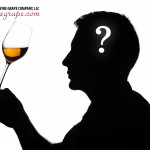

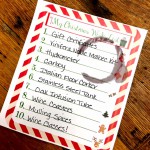
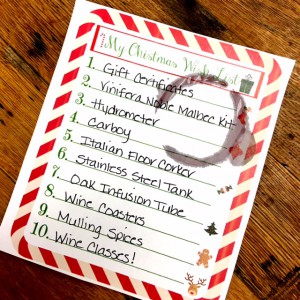
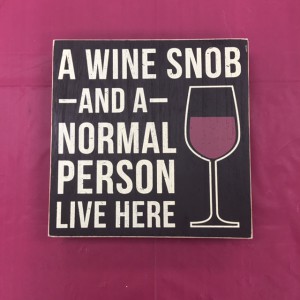
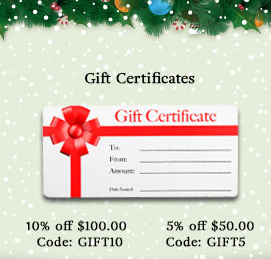
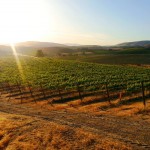
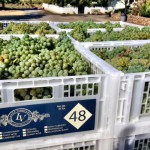
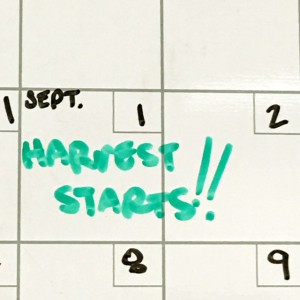
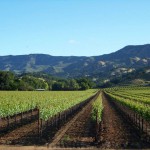
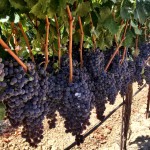
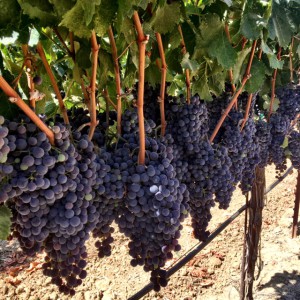
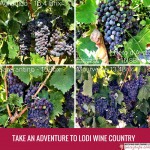
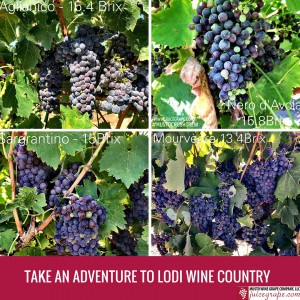
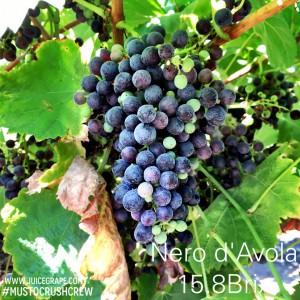
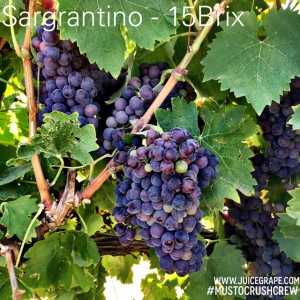
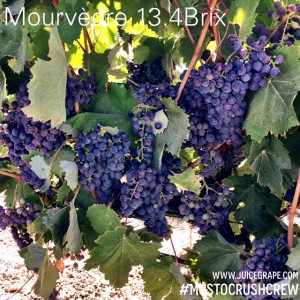
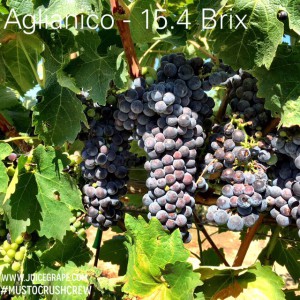
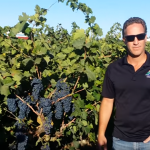
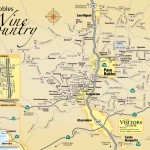
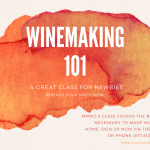
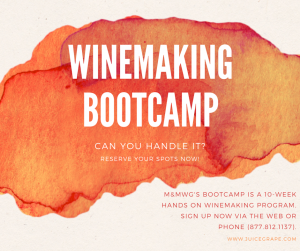
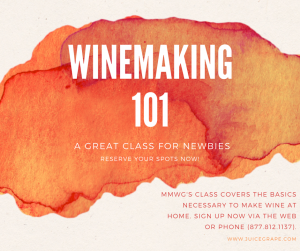
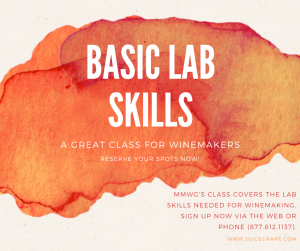
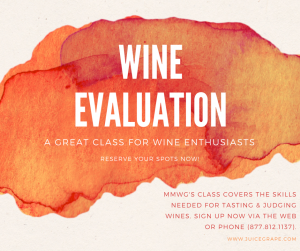
Recent Comments